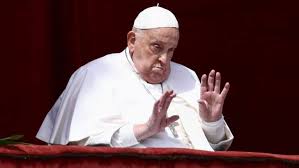459
By Myke Agunwa
The Directorate of Health and Hygiene of the Vatican City State has released the official medical report, which confirmed through electrocardiographic thanatography that Pope Francis died of stroke.
It stated that the stroke was followed by a coma and irreversible cardiocirculatory collapse, according to his death certificate released by the Vatican on Monday evening.
The 88-year-old Catholic leader died on Monday morning, almost a month after being discharged from five weeks in hospital with double pneumonia.
The official certification was issued by Professor Andrea Arcangeli, Director of the Directorate of Health and Hygiene of the Vatican City State.
According to the medical report, the Pope had a prior history of acute respiratory failure caused by multimicrobial bilateral pneumonia, multiple bronchiectases, high blood pressure, and Type II diabetes.
His death was confirmed through electrocardiographic thanatography. “I hereby declare,” wrote Dr. Arcangeli, “that the causes of death, to the best of my knowledge and judgment, are as stated above.”
The 88-year-old Catholic leader died on Monday morning, almost a month after having been discharged from five weeks in hospital where he nearly succumbed to double pneumonia.
Francis died at 7.35 am (0535 GMT) in his apartment at the Santa Marta residence in the Vatican.
During his regime, Pope Francis changed the face of the modern papacy more than any predecessor by shunning much of its pomp and privilege, but his attempts to make the Catholic Church more inclusive and less judgmental made him an enemy to conservatives nostalgic for a traditional past.
The conservative-progressive gap became a chasm after Francis was elected the first non-European pope in 1,300 years.
Francis appointed nearly 80% of the cardinal electors who will choose the next pope, increasing, but not guaranteeing, the possibility that his successor will continue his progressive policies. Some Vatican experts have predicted a more moderate, less divisive successor.
Under his watch, an overhauled Vatican constitution allowed any baptised lay Catholic, including women, to head most departments in the Catholic Church’s central administration.



